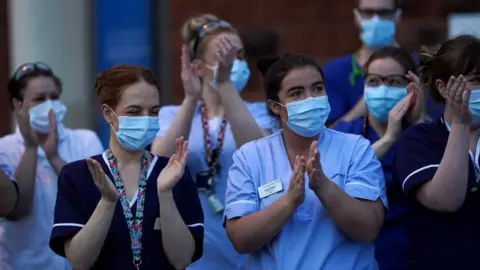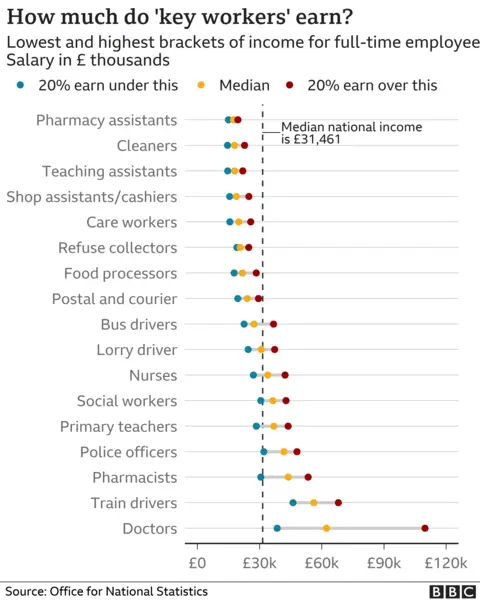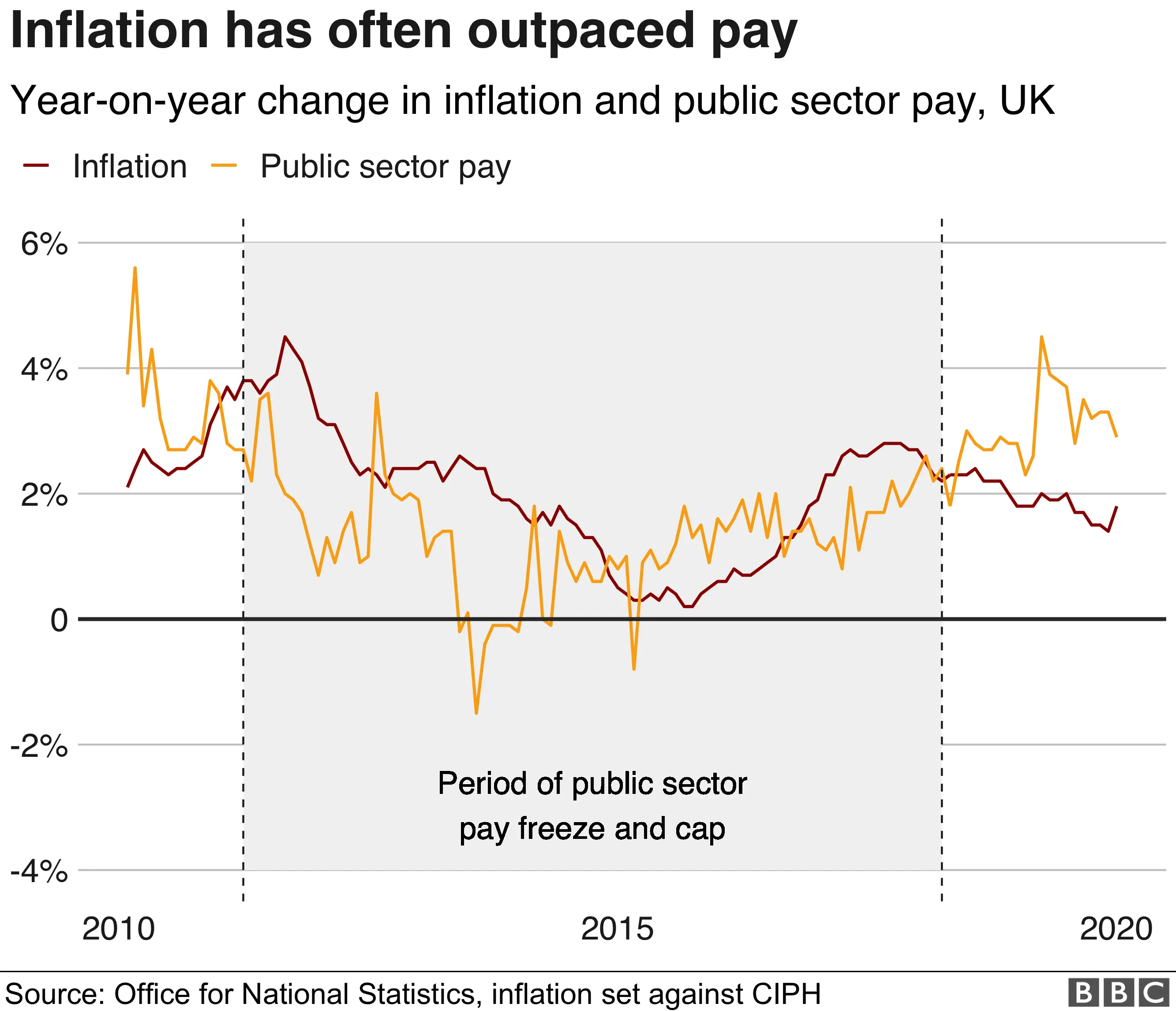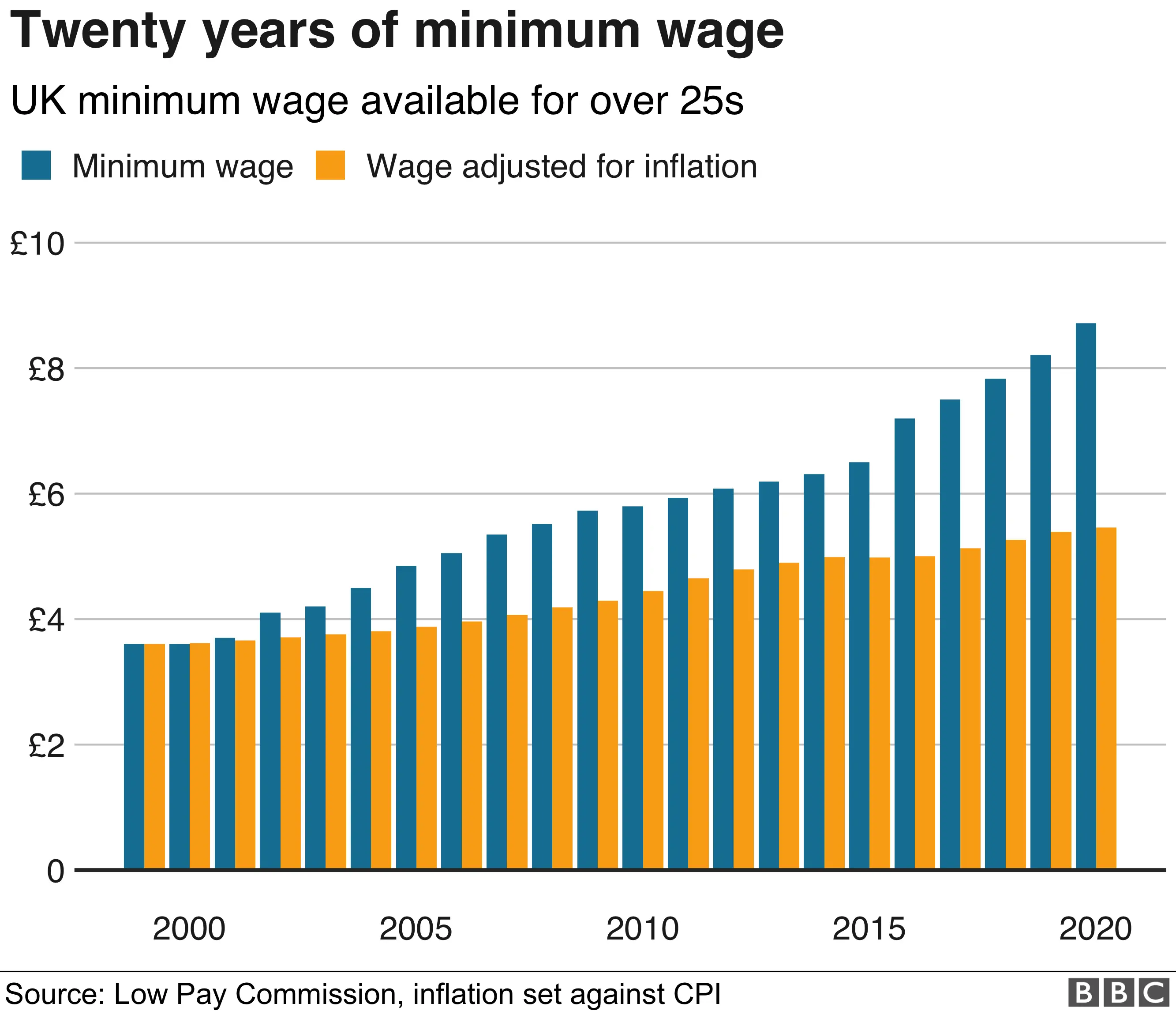Coronavirus: Key workers are clapped and cheered, but what are they paid?
 Getty Images
Getty ImagesEvery Thursday evening the UK is clapping for NHS staff, carers and other key workers. But many are on low pay.
The weekly applause ran for 10 weeks during the UK's first coronavirus lockdown last spring and is set to return from 7 January.
Key workers are the individuals recognised by the government as being critical to the running of the country, ranging from NHS and care workers to delivery drivers and shop workers.
How much are they paid?
Across the UK, the median salary for all full-time employees last year was £31,461.
We use the median income - the salary right in the middle of all employees - because, unlike the (mean) average, it doesn't get pushed up by the small number of extremely well-paid individuals at the top. It can therefore be seen as a better indicator of the "typical" income.
The Office for National Statistics' (ONS) annual earnings survey provides a detailed picture of key workers' pay, as well as higher and lower pay brackets.
The following chart represents where most workers - 60% - sit in the salary range. But 20% of people in each profession earn less than the bottom of this range. And 20% earn more than the top of the range.
And in many cases, those starting out earn significantly less than the bottom of the range - police officers can expect a salary of around £25,400 a year to start with, the lowest NHS pay band for a nurse is under £20,000 and junior doctors receive under £30,000 for their first foundation year.
There are dozens of professions and roles that count as key workers. This selection has been chosen to cover a number of sectors but is not exhaustive.

The average full-time cashier, shop assistant, care worker, food processor, bus driver and postal worker all earn below the median income.
Nurses and primary teachers are paid just above the median income, while doctors and pharmacists earn substantially above it.
However, working out average salaries is an inexact science with various factors affecting pay - like overtime, part-time work or extra money for working in an expensive area.
Low income employees, for example, are more likely to work part-time or hour-by-hour (such as through zero-hour contracts). This means a large number will not earn anything close to their occupation's full-time median income.

- A SIMPLE GUIDE: How do I protect myself?
- AVOIDING CONTACT: The rules on self-isolation and exercise
- HOPE AND LOSS: Your coronavirus stories
- LOOK-UP TOOL: Check cases in your area
- VIDEO: The 20-second hand wash
- STRESS: How to look after your mental health

The ONS estimates that the hourly pay for a care worker, cashier or shelf stacker is under £9 - which is more or less in line with the minimum wage (£8.72 for those aged 25 and over). But that falls short of what the Living Wage Foundation charity calculates is necessary to meet basic needs. It recommends £9.50 - or £10.85 in London.
Analysis by the BBC's Shared Data Unit last year found that hundreds of thousands of key workers earn below that.
Who decides their pay?
The government plays a large role in the pay of individuals working in the public sector - that's anyone whose job is directly funded by taxes.
Police officers, nurses, civil servants and teachers all have representatives who work with government departments, unions and other groups to come up with annual recommendations for how much pay should change.
 Getty Images
Getty ImagesThe government sets "remits" on these boards.
Between 2011 and 2018, most public sector pay was either frozen or capped at 1%, as part of the government's austerity measures aimed at reducing the deficit.
This meant that as prices increased with inflation, salaries did not keep up.

The government has less control over private sector pay.
This includes people who work in transport, supermarkets, postal and courier services.
It also includes most care home staff and any services (such as cleaning or catering) the NHS might outsource.
The government does not directly set their wages, but they can lower taxes, provide benefits and increase the minimum wage.
Will there be a change to pay?
Chancellor Rishi Sunak announced in November's Spending Review that 1.3 million public sector workers would be getting their pay frozen again.
But 2.1 million workers earning less than £24,000 a year were promised a pay rise of at least £250.
And more than a million NHS workers will get an increase.
The minimum wage will go up by 19p to £8.91 an hour in April 2021. The Conservatives have pledged to increase this to £10.50 by 2024.
Some private companies, including supermarkets and delivery services, have already increased pay for staff during the coronavirus crisis.

